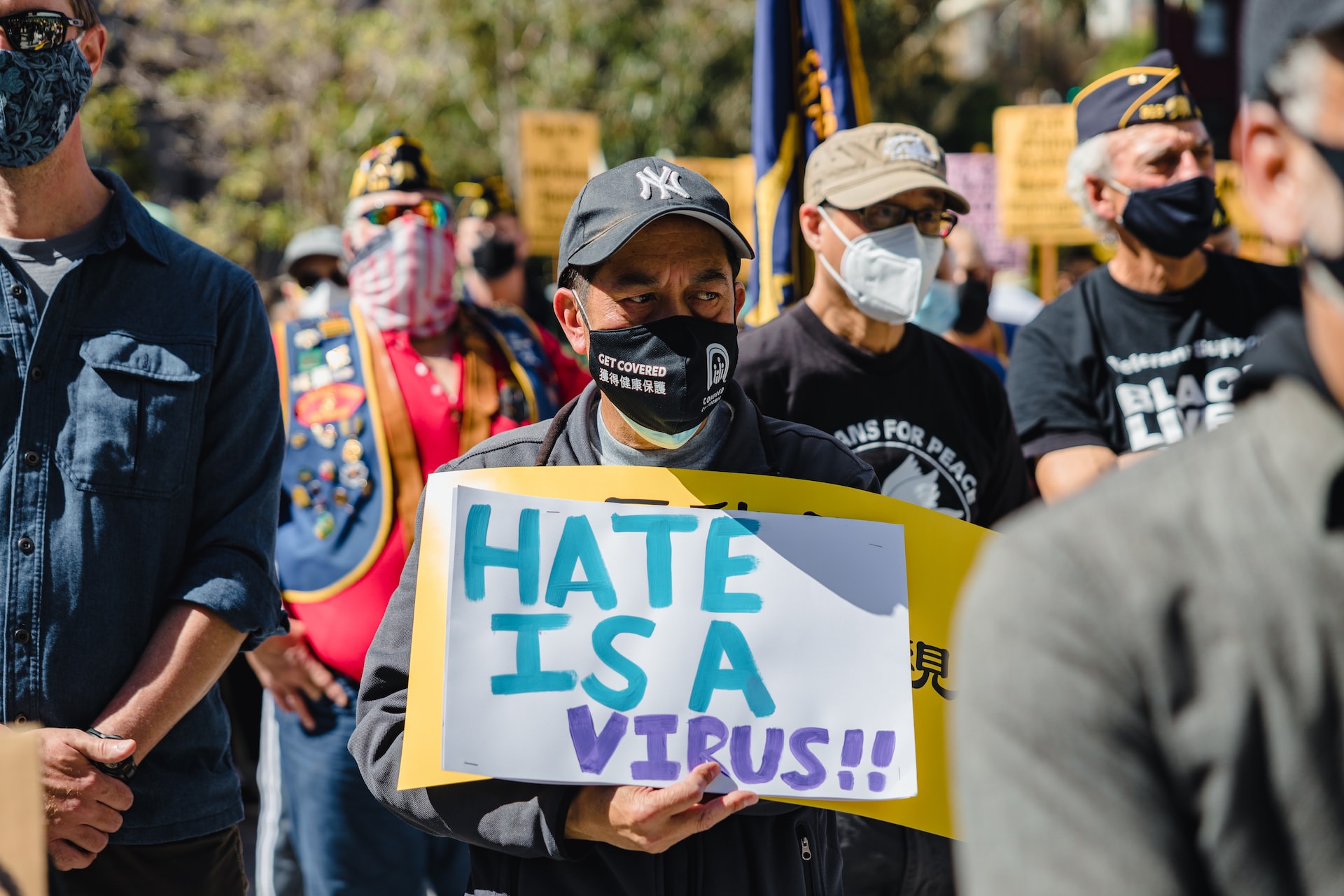In a world that’s increasingly connected, it’s more important than ever to be aware of hate speech. But what is it? How do you recognize it? And how do you deal with it? Here are five things you need to know about recognizing and dealing with hate speech.
What is Hate Speech?
Hate speech is any communication that disparages a person or group on the basis of attributes such as race, religion, ethnic origin, sexual orientation, disability, or gender. Hate speech can take many forms Ð from graffiti and physical intimidation to verbal insults and online harassment. It has the power to create an atmosphere of fear and exclusion that can severely undermine a personÕs sense of safety and belonging in their own community.
In its most extreme form, hate speech can incite violence against individuals or groups based on their real or perceived membership in certain identity groups. As such, it is seen as an obstacle to creating an inclusive and harmonious society wherein all individuals feel safe and respected regardless of who they are. This is why identifying and combating hate speech is a critical component to tackling discrimination at large.
When it comes to determining what constitutes hate speech, it’s important to consider both the content of the words being spoken as well as how they are intended to be heard. Words may be considered hateful if they are derogatory or insulting towards a particular group of people. However, depending on context they may also be seen as acceptable expressions of social criticism so long as they do not seek to harm any individual or group on the basis of their identity or affiliation.
Why is Hate Speech a Problem?
Hate speech is a broad term that encompasses verbal, written, or symbolic speech that promotes a hostile environment towards members of certain groups. It can be used to target individuals or whole groups due to their race, ethnicity, religion, sexual orientation, gender identity, disability or other characteristics.
Hate speech has damaging consequences for both the targets and the perpetrators of hate. It can cause deep psychological scars and contribute to an atmosphere of intolerance and hatred in communities. It also affects members of targeted communities by creating an environment in which it is harder for them to feel safe and secure in their own homes and neighbourhoods.
The effects of hate speech are not only psychological; it can escalate over time into physical violence between different ethnic and religious groups or between supporters from opposing political parties. This phenomenon is known as “incitement” – when hateful rhetoric leads directly to physical acts of violence or intimidation against those who have been targeted with hate speech.
Finally, when left unchecked by authorities and civil society organizations, hate speech can lead to the erosion of democratic institutions and compromise human rights protections established through laws intended to create an inclusive society for all citizens regardless of identity.
How to Identify Hate Speech?
Identifying hate speech can be tricky, as the content may not overtly seem like it contains hateful messaging. It is important to examine content in its context to understand the intent behind it. When identifying hate speech, look for the following characteristics:
-Attacks on an individual or group because of race, religion, gender identity, ethnicity or any other distinct group membership
-Dehumanization of targeted groups by promoting stereotypes and negative beliefs associated with them
-The use of sensationalist language and expressive symbols that incite fear and/or prejudice
-Justification of violence or discrimination against the targeted group
-Assertion that members of a particular group are considered subhuman (“untermenschen”) or evil
It should also be noted that instead of directly targeting a specific group in its messaging, some hate speech takes a more subtle approach towards marginalizing affected individuals by presenting demeaning messages about them as “jokes”.
Consequences of Hate Speech
Hate speech can have serious and long-term consequences beyond the immediate distress it causes. It can also lead to or worsen discrimination, bigotry and violence, which have a lasting impact on individuals, communities and societies. Therefore, it is important to be aware of the potential consequences of hate speech on individuals and societies.
Individual consequences:
Hate speech can cause psychological harm including anger, fear, depression and anxiety. It contributes to feelings of marginalization and isolation from society by attacking an individual’s identity and community of belonging. Such language has been linked to cyberbullying, violence against vulnerable groups, mental health issues such as suicidal thoughts, depression or post-traumatic stress disorder (PTSD), diminished educational performance and quality of life.
Societal consequences:
Hate speech can lead to reinforcement of prejudice that already exist in a society as well as increasing tensions between different ethnicities or religions in order to create social divisions among members of society. This raises the risk for discriminatory practices in public spaces such as education or the labour market leading to increased segregation within certain areas or groups. Further risks include creating negative stereotyping that leads people feeling targeted because they are members of a certain group. Such feelings of exclusion may then lead certain people to retaliate with either aggressive behaviours/actions or even extremist movements such as violent non-state actors or organized crime groups who target vulnerable parts of society promoting their own extreme ideologies associated with hatred hatred towards civilians for political benefit with complete disregard for human rights approach
Strategies to Combat Hate Speech
Hate speech has become an increasingly pressing issue in our society. It is important to understand the strategies that can be used to combat hate speech in order to give people the ability to live free from fear and discrimination. Here are five things you need to know about how to combat hate speech:
1) Create a Centered Self: One of the most important strategies for combatting hate speech is creating a centered self, or perspective. In order to do this, it is necessary to focus on inner strength, emotional regulation and controlling biases that can lead people into adopting language of intolerance or hate.
2) Speak Out: When faced with examples of hate speech, individuals must speak out against it as well as establish boundaries for conversations where language of contempt or hatred can take root. Developing empathy and responding in compassionate ways can help combat hateful language.
3) Educate Others: Education is one of the most powerful tools in combating hate. Understanding the background behind hateful language helps foster understanding and tolerance. Widen circles by speaking with others who come from different backgrounds than you or participate in activities where conversations on these topics are occurring.
4) Move Towards Active Engagement: Active engagement involves getting involved with organizations or efforts that focus on advancing human rights and tackling civil and political rights issues pertaining to marginalized groups targeted by hate speech patterns
5) Demonstrate Inclusive Behavior At All Times: Always strive for respectful dialogue with others regardless of their identity, experience or beliefs and encourage others to do the same when interacting with diverse groups
Legal Implications of Hate Speech
Hate speech encompasses communications that are meant to attack or demean an individual or group based on certain characteristics, such as race, religion, gender identity or sex. While freedom of speech is an important right, U.S. law does not permit hate speech that may lead to discrimination and violence against targeted individuals or groups.
The legal definition of hate speech means expressing hateful, derogatory words about a person’s identity characteristics in public places where it can be heard or seen by others. Hate speech also includes visual messages like posters and slideshows showing pictures, videos, music and other materials all intended to encourage hatred of particular demographic groups.
Hate speech is seen as unprotected by the U.S Constitution and its guarantees of freedom of expression since it promotes violence and discrimination against the target group who has already experienced oppression through past acts of discrimination on them caused by those same expressions. Depending on the severity of the offense, a hate-speech crime can result in civil liability in the form of fines imposed on individual offenders; lawsuits against companies; criminal charges; incarceration; and even death sentences.
While online hate speech is difficult to regulate due to its complex nature, societies are increasingly plagued with cyber-racism that often goes unchecked until it erupts into physical violence targeting victims from social media outlets like YouTube and other forums enabling anonymity for offenders who remain untraceable due legal loophole – making it both difficult for victims to seek redress for their ordeal in courts.
Role of Technology in Addressing Hate Speech
Technology can play an important role in addressing hate speech online. There are a few different ways that technology can help protect users from encountering hate speech online, including:
1. Automated content detection systems: Automated content detection systems are software programs that enable websites and social media networks to identify when something appears on the platform that could be considered hateful or offensive. These systems rely on specific keywords and phrases, as well as rules designed by the platform to determine if something is deemed hateful or unacceptable.
2. Artificial Intelligence (AI): AI can also be used to detect and moderate problematic or offensive behavior online, such as posts or comments containing discriminatory language or bigoted statements. It is important to note, however, that AI technologies vary drastically in terms of accuracy and may require human intervention in order to properly identify and address issues of hate speech on digital platforms correctly.
3. User Reporting Systems: Many digital platforms have user-reporting systems that allow individuals who encounter hate speech on the platform to report it directly to moderators at the platformÕs headquarters for further review. These reporting tools can allow moderators to swiftly address any hateful material posted on their site before it spreads too widely across their community.
4. Moderation Practices: Social media platforms such as Twitter, YouTube, and Instagram have implemented certain moderation practices such as banning certain keywords from appearing anywhere in titles, hashtags, descriptions for uploaded videos/posts or in search results for those platformsÕ search functions . Although this type of moderation practice does not actively prevent incidents of hate speech from occurring, it does make it more difficult for users who intend to spread hatred toward certain groups using these services by limiting how visible these messages become when shared on those platforms .
5. Encouraging Open Dialogue: Technology companies should also strive towards providing opportunities for open dialogue between users with varying backgrounds so that there can be constructive discourse and civil exchanges among different groups within digital communities . This type of communication encourages understanding between different groups while helping to create a platform where all kinds of opinions can be expressed freely without fear of experiencing any kind of intolerance based solely upon their identities .
Best Practices to Prevent Hate Speech
In order to create a safe, inclusive society free from hate speech, it’s important for individuals to understand the best practices for preventing and responding to this type of speech. Here are five key tips for staying informed about hate speech:
1. Educate yourself and others on the effect that hate speech can have. Understanding WHY hate speech is wrong is important in recognizing it when you see it and responding effectively.
2. Speak out against such language by promoting respect and rejecting discrimination, while keeping in mind individual perspectives as well as your responsibility to challenge stereotypes or discrimination.
3. Challenge untrue statements when you come across them online or in person and use accurate language instead of words that contribute to negative stereotypes or inaccurate narratives.
4. If you observe behaviors that violate policies, contact authorities or authorities responsible for enforcement at your school, workplace, community center or any other relevant organizations immediately and let them know what is happening so they can take action in line with their policies and procedures.
5. Encourage those around you elders, peers, colleagues to do the same; alerting officials will minimize impunity for perpetrators when possible and offer a sense of community protection in areas where this kind of behavior might be more commonplace than elsewhere






